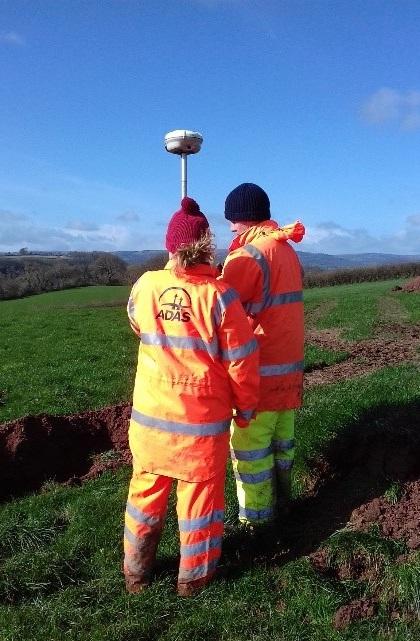Graig Olway Project Introduction: Technical considerations when improving infrastructure
Demonstration Site: Graig Olway, Usk
Technical Officer: Gwenan Evans
Project Title: Technical considerations when improving infrastructure
Introduction:
There are many factors to consider when making any business decisions such as expanding or diversifying into another enterprise. An up to date business plan will help identify barriers, and also explain what can be done to overcome these. The dairy unit comprises of 160 milking cows running three robots, and 70 sucklers housed on sand bedded cubicles with youngstock housed on deep straw bedding. Russell Morgan is aiming to increase the herd to around 250 head and install another robot. One of the main barriers identified was the capacity of the slurry lagoon, which will not hold the excess slurry, therefore, halting Russell’s plan to increase his milking herd.
Having adequate and well-maintained on-farm slurry storage with the capacity to hold six months’ worth of slurry will enable farmers to target natural manure applications to match with crop nutrient requirements, rather than when storage reaches its limit. By focusing on application to crop growth needs, nitrogen intake can be increased and dependence on artificial fertiliser diminished.
Aim
With agriculture pollutions appearing on the news more often and proposed new regulations covering the whole of Wales to protect water quality from agricultural pollution, it is clear that steps must be taken to improve slurry management on farm. The key objective of this project is to investigate the options and measures to take into account when increasing slurry storage capacity. ADAS will be making recommendations on improvement works to the current infrastructure which will protect any nearby watercourses and provide a programme of practical economic solutions to the current situation. Eoin Murphy from ADAS will undertake a farm visit to explore how best to achieve improved slurry storage capacity, focusing on:
- Reducing clean water runoff into slurry storage
- Site selection considerations
- Meeting planning and building warrant regulations
This will give an insight to the process of increasing slurry storage capacity, from water management to location suitability. According to AHDB figures, annual rainfall is approximately 1,059mm in the area, of which approximately 524mm would be expected to fall over the worst five-month winter period. A large quantity of the water reaches the slurry lagoon including water from parlour washdown and dirty yards which is unnecessarily increasing the slurry storage capacity. Having adequate and well-maintained on-farm slurry storage with the capacity to hold six months’ worth of slurry will also enable farmers to target natural manure applications to match with crop nutrient requirements, rather than when storage reaches its limit.
KPI:
Increase milking herd by 50 cows plus replacements

